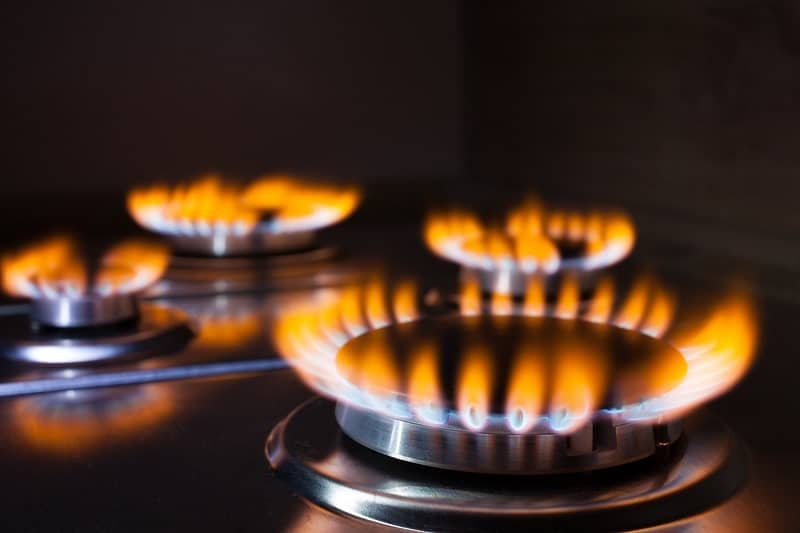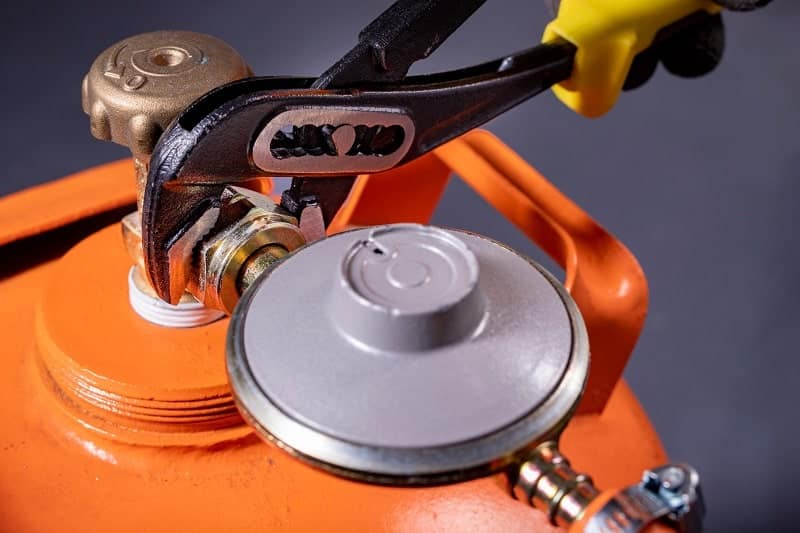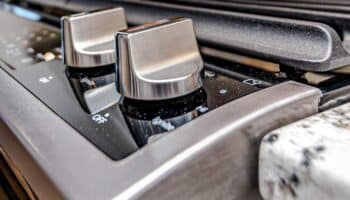If you have a gas stove, there is a good chance that you enjoy cooking on it. A gas stove offers a number of advantages over a traditional electric range. It heats up faster, is often easier to use, and can generate more power. On the other hand, you also have to worry about a potential gas leak with a gas stove.
Even though a gas stove is usually safe and incredibly durable, there are situations where a gas leak might occur. If you have a gas leak coming from your stove, you need to respond as quickly as possible by calling the gas company.
At the same time, what do you need to do to detect a gas leak coming from your stove? Then, how might you be able to fix it? Learn more about this process below!
What Is a Gas Leak?
Natural gas is a fuel source that comes from the underground regions of the Earth. It is made up of a wide variety of gases, but it can also be dangerous. A gas leak takes place when a gas line that supplies fuel to your stove springs a leak. Then, this gas leaks into open areas.
Even though it is more likely to happen with older gas lines that are subject to corrosion, they can happen at any time. If the gas line going to your house is exposed to water, it can degrade faster. As the outside material at the gas line fades away, fractures can take place. This is how gas leaks into the external environment.
Why Are They Dangerous?
Gas leaks are a significant danger. There are several reasons behind this. They include:
- If gas is present in high concentrations, it can lead to dizziness and asphyxiation, particularly if the gas is trapped in a small area.
- Natural gas is flammable. If it is exposed to a flame, it can explode. This is also why natural gas is great to cook with when it is under control.
- Natural gas is toxic to vegetation you might have in your home. This could include houseplants, trees, and vegetation.
- Even if natural gas does not explode, it can lead to significant property damage.
- Natural gas is also very expensive, particularly when it starts to leak. It can significantly drive up your utility bills.
For all of these reasons, you need to know what to do if you think you might have a gas leak coming from your stove. Furthermore, you also need to know how to detect them.
What Should You Do if You Think You Have a Gas Leak?
If you think you have a gas leak in your home anywhere, including the stove, you need to call the gas company immediately. This is an emergency, and they need to shut off the gas flowing to your home. If the gas is allowed to continue to leak, it could explode.
There are a number of contact points you should have, but it is a good idea to pin the number for the gas company on your refrigerator. That way, you can reach out to them as quickly as possible. No matter what time it is, somebody should be on call to disable the gas line. You might need to evacuate your home, depending on what the gas company says.
Materials Needed To Check for Gas Leaks
You will not need a lot of material to check for gas leaks. You will need your stove, your senses, a gas leak detector, some soap, and some water. Then, you can get started taking a closer look at your stove.
How To Detect a Gas Leak: 5 Steps
If you want to detect a gas leak coming from your stove, you have a number of options. These include:
#1 Use Your Nose
This is the first (and most common) option people use to detect a gas leak in their homes. You simply have to use your nose. Gas stoves are great, but gas companies are also aware of the danger they present. Therefore, they add something called mercaptan to the gas to make it easier to smell.
The odor of natural gas smells like rotten eggs or sulfur. Even though the smell can be disgusting, that is the point. Without this additive, natural gas is odorless and colorless, making it even more dangerous. If you detect this odor in your home, it is time to call the gas company.
#2 Use Your Ear
If you sense that there is a whistling noise coming from your stove or your gas line, this could be a sign of a gas leak. If you can hear the gas leak, it is substantial.
You should pay attention to where the noise is coming from. For example, there are a number of other potential causes of a whistling noise as well. If you hear this near your air conditioner, and this could be a problem with the refrigerant line or a damaged compressor.
On the other hand, if you hear this whistling noise coming from your range, this is probably a sign of a gas leak. It is important to call the gas company as quickly as possible.
#3 Use Your Eyes
You could also take a close look at your stove and use your eyes to see if there is a gas leak. Yes, natural gas is colorless, but you have other options available. When you turn on your stove, what color are the flames?
If your stove is working properly, the flames should be blue. If you notice that the flames are consistently red or orange, this is a sign that they are running low on gas. This should not be the case, so it is a sign the gas is going elsewhere.
If the gas is going elsewhere, you probably have a leak. Even if you cannot smell it or hear it, you need to get orange or red flames evaluated quickly. Keep in mind that if the flames are only flashing, this is probably not a problem. If you never see blue flames, and they are consistently orange or red, you should be concerned about a gas leak.

#4 Use a Gas Leak Detector
If you do not trust your senses, there are tools you can use to check for the presence of a gas leak. For example, you may want to do the gas leak detector that can help you figure out if there is something wrong. If you are looking for a gas leak detector, there are several options from which to choose, so you do not need to spend a significant amount of money.
Furthermore, if you are looking for a gas leak detector, you may want to reach out to the gas company for recommendations. They may be able to point you in the right direction, and they will probably appreciate you going the extra mile to make their lives easier.
#5 Use Some Soap and Water
This is a classic way to check for the presence of a gas leak. What you need to do is make some soap and water together until you see some bubbles start to form. Then, identify the location from which you think there might be a gas leak. Take the soapy water and put this on top of the area.

Then, simply wait a few minutes. If you see bubbles start to form, this is a positive test. There are bubbles forming because there is gas coming up from the surface. If the test is positive, you need to call the gas company as quickly as possible.
How Do You Fix a Gas Leak: 5 Steps
Without a doubt, natural gas can be dangerous. Therefore, if you have a gas leak, it is always better to reach out to a professional who can help you fix this. That way, you know it will be done properly the first time, and you can avoid a significant safety hazard.
On the other hand, if you are inclined to fix the gas leak on your own, you need to make sure everyone gets out of the home. Make sure you do not start your car, as this could cause an explosion.
Then, a few steps you need to follow include:
#1 Turn Off the Gas
You always need to make sure you turn off the gas before you start working on it. That way, you don’t have to worry about making the gas leak worse.
#2 Remove the Outer Cover of the Gas Line
There is usually a plastic cover on the gas line. You need to remove this to start the repair process. Make sure you wear a mask. You do not want to inhale any gas that comes out of the line.
#3 Release the Pressure #3 Release the Pressure
Now, it is time to release the pressure and remove the old gas line. This usually requires a wrench. Crack the fittings, and remove the gas line.

#4 Attach a New Gas Line and Seal It
After this, you can attach a new gas line. Make sure there is a relatively loose fit. You do not want to tighten it too much, as you could make a new leak. Use rubber tape to seal the gas line. This will make the grip stronger, preventing a future leak.
#5 Test the New Line
Finally, apply some epoxy and allow it to sit overnight. The next morning, you can use a leak detector to check the new line. Make sure there is no leak, and apply new gas line covers.
Deal with Gas Leaks Quickly
Gas leaks are a significant danger. They need to be dealt with as quickly as possible, so call the gas company first. There are a number of ways to detect a gas leak, and it is usually better to rely on a professional who can fix this for you.







